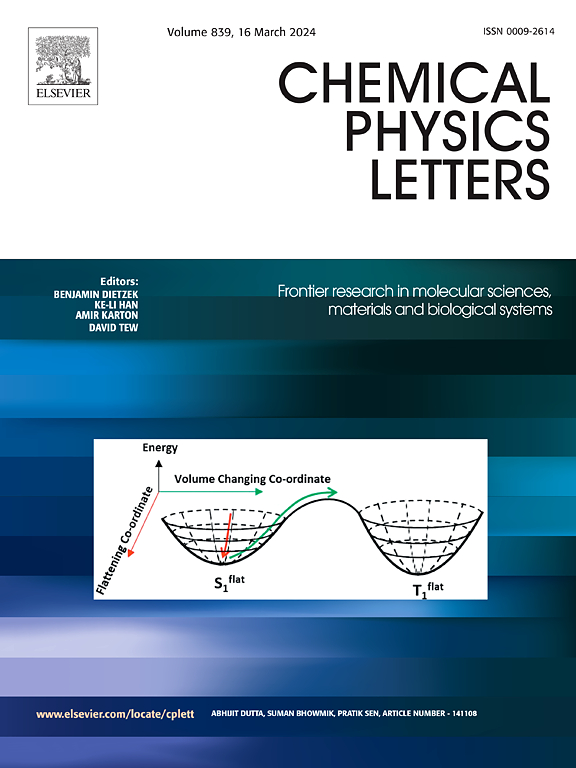氮、硼、硫配位双原子铜催化剂电催化CO₂还原的理论研究
IF 2.8
3区 化学
Q3 CHEMISTRY, PHYSICAL
引用次数: 0
摘要
由于双原子催化剂具有比单原子催化剂更复杂和适应性强的原子结构,因此被认为是CO2还原反应(CO2RR)中很有前途的催化剂。本文研究了N、B、S配位双Cu原子催化剂对CO₂RR的催化性能。我们对45种催化剂构型Cu₂-NxMy-Z (M = B或S)进行了综合分析,重点研究了它们的结构稳定性、热力学稳定性和电化学性能。结果表明,该催化剂对CO₂RR具有良好的稳定性和选择性,特定构型对生成HCOOH、CO、CH₃OH和CH₄具有较低的限制潜力。特别是,HCOOH表现出明显的产物活性,具有较低的极限电位。B和S配位导致的电子结构和吸附性能表明,金属原子周围的电子密度增加,有利于关键中间体的吸附。该研究为设计有效的CO₂RR催化剂提供了见解,从而促进了可持续化工生产和环境修复。本文章由计算机程序翻译,如有差异,请以英文原文为准。

Theoretical investigation on diatomic copper catalysts coordinated with nitrogen, boron, and sulfur for electrocatalytic CO₂ reduction
Due to their more complicated and adaptable atomic structure than single atom catalysts, diatomic catalysts are considered as promising catalysts for CO2 reduction reactions (CO2RR). In this paper, we investigate the performance of dual Cu atom catalysts coordinated with N, B and S for CO₂RR. We have performed a comprehensive analysis of 45 catalyst configurations, Cu₂-NxMy-Z (M = B or S), focusing on their structural stability, thermodynamic stability, and electrochemical performance. Our results show that the catalysts exhibit excellent stability and selectivity for CO₂RR, with specific configurations showing low limiting potentials for the production HCOOH, CO, CH₃OH and CH₄. In particular, the HCOOH shows an apparent product activity with a low limiting potential. The electronic structures and adsorption properties resulting from the coordination of B and S showed an increaseing electron density around metal atoms, facilitating the adsorption of key intermediates. This study provides insight into the design of efficient catalysts for CO₂RR, thereby advancing sustainable chemical production and environmental remediation.
求助全文
通过发布文献求助,成功后即可免费获取论文全文。
去求助
来源期刊

Chemical Physics Letters
化学-物理:原子、分子和化学物理
CiteScore
5.70
自引率
3.60%
发文量
798
审稿时长
33 days
期刊介绍:
Chemical Physics Letters has an open access mirror journal, Chemical Physics Letters: X, sharing the same aims and scope, editorial team, submission system and rigorous peer review.
Chemical Physics Letters publishes brief reports on molecules, interfaces, condensed phases, nanomaterials and nanostructures, polymers, biomolecular systems, and energy conversion and storage.
Criteria for publication are quality, urgency and impact. Further, experimental results reported in the journal have direct relevance for theory, and theoretical developments or non-routine computations relate directly to experiment. Manuscripts must satisfy these criteria and should not be minor extensions of previous work.
 求助内容:
求助内容: 应助结果提醒方式:
应助结果提醒方式:


